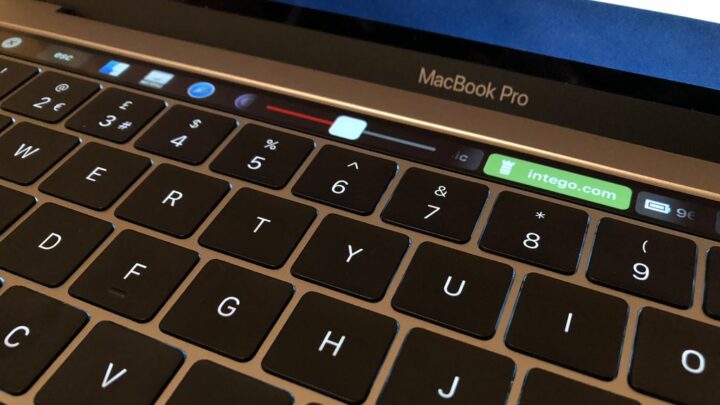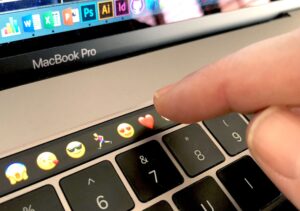You can customize the Touch Bar on the MacBook Pro to suit your workflow. Make it your own! The Touch Bar is an OLED panel across the highest point of the console on the most recent model MacBook Pro. With it, you can handle a wide assortment of settings and devices inside the Mac system, just as implicit and outsider applications. Many Touch Bar settings are adjustable, including the Control Strip, so you can add or eliminate instruments to make a superior work process for your every day use. Here’s the secret.

What we will see here?
Customize the Touch Bar on the MacBook Pro
They need to call attention to that, only one out of every odd application will offer customization of the Touch Bar. Designers have the choice to incorporate it with their applications. The entirety of the Mac’s built-in applications offer Touch Bar customizations, however you’ll need to verify whether your outsider applications have redone Touch Bar tools.
- Choose an app or program. If you want to change the Control Strip. Click your desktop screen.
- Click View in the app menu bar at the top of your Mac’s screen.
- Select Customize Touch Bar from the drop down menu.
- Select and drag a tool from the customization panel down toward the bottom of the screen.
The device will show up on the Touch Bar, where you can additionally arrange it by moving it to any area inside the application segment.
How to reorganize tools in the Touch Bar on the MacBook Pro
You can add and eliminate instruments in the Touch Bar with numerous applications, and you can likewise move them around in the application locale to arrange them as per the manner in which you use them.
- Choose an app or program. If you want to change the Control Strip. Click your desktop screen.
- Click View in the app menu bar at the top of your Mac’s screen.
- Select Customize Touch Bar from the drop down menu.
- Touch and hold a tool in the Touch bar when the customization panel appears. It will enter “jiggly mode” just like on iOS.
- Drag the tool to its new location within the app region.
- Tap Done when finished.
How to remove tools from the Touch Bar on the MacBook Pro
Regardless of whether you need to dispose of the default devices or have altered your perspective on what you need to store in the Touch Bar, you can eliminate them.
- Choose an app or program. If you want to change the Control Strip. Click your desktop screen.
- Click View in the app menu bar at the top of your Mac’s screen.
- Select Customize Touch Bar from the drop down menu.
- Touch and hold a tool in the Touch bar when the customization panel appears. It will enter “jiggly mode” just like on iOS.
- Drag the tool to the trash can icon on the far left of the Touch Bar.
- Tap Done when finished.
Change Touch Bar settings
Set choices to control what’s appeared in the Touch Bar. For instance, you can have the Touch Bar show simply the extended Control Strip or just application catches. You can likewise change what happens when you press and hold the Fn key or the Globe key on the console.
- On your Mac, choose Apple menu > System Preferences, click Keyboard, then click Keyboard.
- Set options for the Touch Bar.
- Touch Bar shows: Click the pop-up menu, then choose what you want the Touch Bar to show—for example, app buttons or the expanded Control Strip.If you don’t want the Control Strip to be shown at the same time as app buttons, quick actions or spaces, de-select the Show Control Strip tick box.
- Press and hold Fn key to or Press and hold

to: Click the pop-up menu, then choose what you want to happen when you press and hold the key—for example, show the Control Strip or quick actions.
The decisions differ contingent upon what you set for “Contact Bar shows.”
To consistently show work keys (F1, F2, and so on) in the Touch Bar for explicit applications, pick Apple menu > System Preferences, click Keyboard, click Shortcuts, select Function Keys in the rundown on the left, at that point add the applications on the right.
Conclusion!
If your Mac has a Touch Bar, you can use it to adjust common system settings, use Siri, access function keys and do tasks in apps.
The Touch Bar, a thin OLED display strip that sits atop the keyboard on Apple’s new 13-inch and 15-inch MacBook Pro notebooks gives users a series of shortcuts, depending on which app they’re using. If you don’t like the default options, though, you can add and remove buttons to customize the Touch Bar to your own preferences.
Thus there are three different ways you can customize your MacBook’s Touch Bar. You can change the settings for your Touch Bar as a whole, customize what buttons appear in the Control Strip, and customize what buttons appear in specific apps.
















